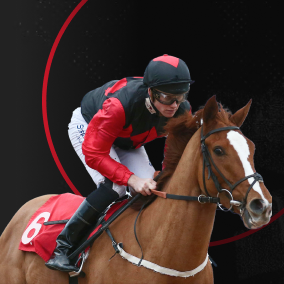Anyone who is new to the world of betting will soon be confronted with the first question that you need to understand when placing a wager: how do betting odds work?
The odds shown by online bookmakers are the key part of any bet, telling you not only the probability of something happening but also how much you stand to earn if your bet wins.
Though it may all seem a little confusing at first, it can be easy to understand once you have had sports betting odds explained, and this understanding will allow punters to get started using different betting sites and a whole range of markets.
So, we’ve created a handy guide for any bettor needing betting odds explained to them, including how odds work, different types of odds offered and some useful odds-related terms.
What are betting odds?
Betting odds are what bookmakers use to represent the likelihood of a particular event occurring. The odds are the ratio between the amount wagered by the bookmaker and the punter – for example, betting odds of 3/1 means that the bookie is wagering three times what the bettor is. Therefore, if the punter wins in this case, they’d take home three times their wager.
Low odds indicate that betting sites believe an event is more likely, and they often offer a lower payout if you were to win (and vice-versa with higher odds).
Odds are calculated by the bookies themselves. They use probabilities to determine the likelihood of an event taking place, and based on this prediction, they will display different odds.
The odds that established and new betting sites display can therefore be used to work out the probability of an event occurring – more on that below.
How fractional odds work
You’ll notice that in the above example, we’ve used what are called ‘fractional odds’ to explain how odds work – this is because this format of odds is used most commonly in the UK.
Fractional odds are self-explanatory in that they display odds as a fraction. In terms of projected winnings, it is fairly simple to read odds – simply put, the number on the right of the fraction is what you’d need to stake in order to win the number on the left.
In the above example, the 3/1 shows that if you placed £1 on a bet with those odds, you would receive £3 back as your winnings (plus the original stake of £1).
Remember that most online bookies will automatically calculate your potential winnings and show you before you place the wager, but it is still handy to know the above.
Punters can also use the odds to determine the implied probability of something happening, and there is a formula for it. That formula is:
Denominator / (denominator + numerator) x 100.
For example, 4/1 would be:
1 divided by (1+4) = 0.2.
0.2 times100 equals 20, so there is a 20 per cent chance of that event happening.
What is an underdog?
Simply put, an underdog is the ‘thing’ – whether that be a sportsperson, team, horse or otherwise – that is less likely to win. The underdog is the opposite of the favourite; this is the team, horse or fighter that is regarded as the more likely victor.
The underdog is reflected with higher odds on betting sites – for example, football betting sites might make an underdog 10/1 to win a match, with the favourite being 5/6 – something known as being ‘odds-on’.
What does odds-on mean?
Odds-on bets may seem confusing initially, as the odds are displayed with the smaller number on the left of the fraction. Backing a selection at 5/6 means that you’d need to stake £6 to win £5 – this is because the bookmaker regards the event as more likely to happen than not.
The probability of those particular odds would be:
6 divided by 11 = 0.545.
0.545 x 100 = 54 per cent probability.
When both numbers on the fraction are the same, for example, something priced at 1/1, this is known as ‘evens’ – a 50/50 bet with an equal chance of the outcome happening or not.
In theory, something that is odds-on is a ‘safer bet’, though there are often times – such as when using free bets, promotional offers or bet tokens – when the bookie will not allow you to stake an odds-on wager.
How decimal odds works
Now that we have had fractional betting odds explained, we move on to decimal odds. Decimals are a more continental style of presenting odds, though some UK betting sites display decimals by default (and many sites offer the chance to choose between fractional and decimal anyway).
Decimal odds are just odds displayed in decimals rather than fractions. To work out your potential winnings, simply multiply your stake by the odds shown. For example, a bet that is offered at 5.00 means that you would win £5 if you bet £1.
To calculate the probability of betting odds shown as decimals, the formula is simple: 100 divided by the decimal.
So for something at 5.00, the probability is 100/5 = 20 per cent.
For a bet at 10.00, the probability would be 10 per cent, and so on.
What are in-play odds?
In-play odds are another piece of jargon that’s fairly straightforward once you read the explanation.
In-play odds are odds that are offered by live betting sites once an event has already started. They are offered on a large range of sports, although horse racing betting sites don’t tend to do in-play betting due to the relatively short nature of a race.
In-play odds differ to pre-match odds as they chop and change based on what has already happened, or is happening, during the event. For example, betting on there to be three goals in a football game is going to have lower odds than before kick-off if you bet after 30 minutes when the score is already 1-0.
Depending on what event you are betting on, in-play odds can be far higher or lower factoring in what has already happened (or not) during that event or match.
American betting odds explained
Many UK bookies now offer odds in the American style, which is seen as + or -, and is used mainly for events that take place in the US. You will often see odds displayed this way in previews for American football and basketball matches, and outright markets too.
How odds work in the US is slightly different to the UK and Europe. If the odds have a + sign, the bet is odds against, but if it has a – sign, the bet is odds-on.
When betting on an underdog, a positive number is shown – that shows how much profit you will get if you bet £100. For example, for a selection with odds of +250, if you bet £100 you would win £250.
When betting on a favourite, the number shown is what you must bet to make £100 in profit. Odds of -170 show that you would have to place £170 to win £100.









![Best Weight Loss Supplements [2022-23] New Reports!](https://technologytangle.com/wp-content/uploads/2022/12/p1-1170962-1670840878.png)




